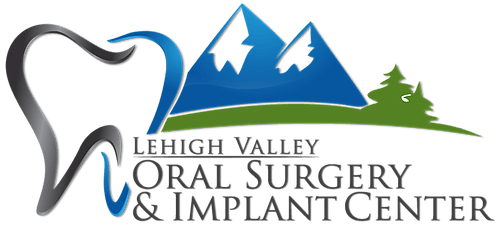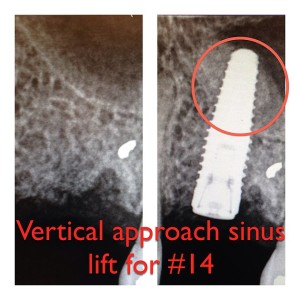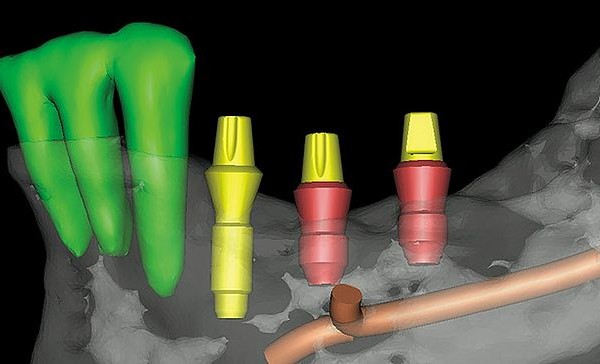Dental implants have revolutionized dentistry but there are some limitations to where they can be used. Anatomical issues arise in the posterior maxilla and mandible. In the lower jaw the nerve can get in the way and in the upper jaw the sinus cavity can interfere with implant placement.
The sinus is an empty cavity containing air. This is not very helpful when trying to place a dental implant which needs to be surrouned by bone in order to be successfull. However, with emerging techniques, this rather large obstacle can be overcome. In the past, a large opening had to be made in the sinus, bone was added and the whole thing closed and allowed to heal. This caused significant swelling and discomfort.
The newer technique of a minimally invasive or vertical approach sinus lift gets us to the end result without having to drastically open up the sinuse. The picture shows how bone is added to just the area around the implant. This allows a for the placement of a longer implant which is completely surrounded by bone. This should result in a higher longterm success rate. The recovery from this procedure is minimal, as opposed to a traditional sinus lift.
The case pictured above was performed by me in the clinic today. The entire procedure took about 35 minutes and the patient should have a quick recovery. The bone completely surrounds the implant, about half of which is in the sinus.



